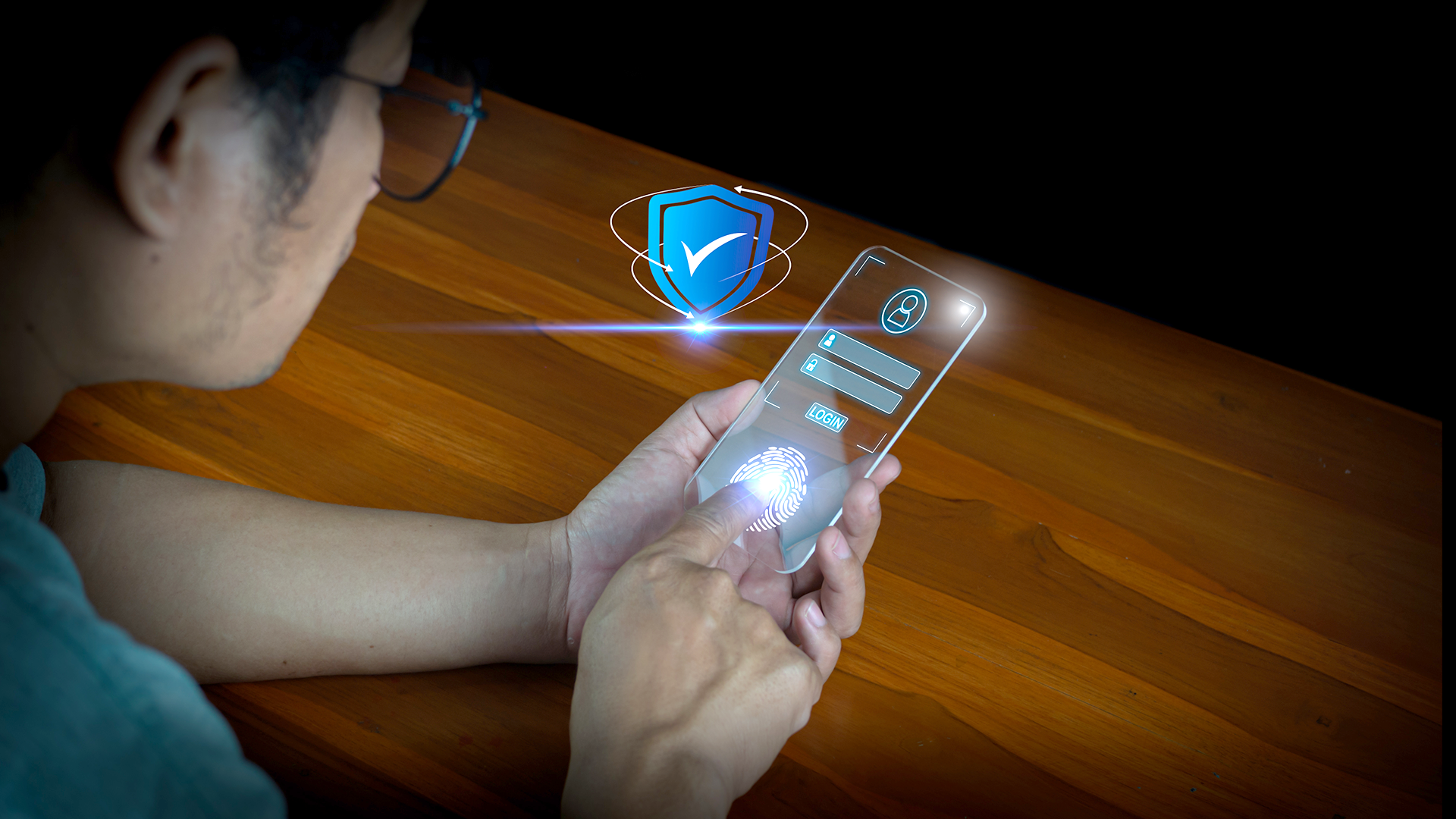
Thank you
Our team of industry domain experts combined with our guaranteed SLAs, our world class technology .


Get Immediate Help
In today’s fast-paced work environment, employees want the flexibility to use their personal devices for work. This trend, known as Bring Your Own Device (BYOD), has become the norm in many organisations. While BYOD enhances productivity and employee satisfaction, it also introduces significant security risks. That’s where Enterprise App Security and Mobile Threat Defence (MTD) solutions step in.
If your organisation uses mobile apps and BYOD devices, ensuring robust mobile app security solutions is essential. This blog delves into how MTD can secure BYOD devices, why BYOD security best practices are critical, and what enterprises need to know about safeguarding their mobile infrastructure.

Enterprise App Security is the practice of protecting mobile and web applications that employees use for work. This includes securing data stored on apps, protecting app communication channels, and ensuring only authorised users access sensitive information.
When employees use their own devices, endpoint security for mobile becomes a critical part of this strategy, as these devices often lack the corporate-grade security measures of company-owned hardware.

Mobile Threat Defence refers to advanced security solutions designed to protect mobile devices and applications from cyber threats. Unlike traditional antivirus software, MTD solutions focus on identifying and neutralising threats specific to mobile environments, including malware, phishing attacks, and network vulnerabilities.
Top Mobile Security Threats
Mobile Malware: Malicious software targeting mobile operating systems.
Phishing Attacks: Cybercriminals tricking users into revealing sensitive information.
Unsecured Wi-Fi Networks: Public networks that expose devices to interception.
App Exploits: Vulnerabilities in apps that can be exploited to access sensitive data.
Data Leakage: Accidental or malicious sharing of sensitive company data.
For organisations with BYOD policies, these threats can compromise sensitive business information and customer data, making BYOD security solutions essential.

Benefits of BYOD
Increased employee productivity and flexibility.
Reduced hardware costs for organisations.
Improved employee satisfaction and work-life balance.
Challenges of BYOD
Devices are often not updated or secured to enterprise standards.
Employees may inadvertently download malicious apps.
Data leakage risks when personal and professional data mix.
Without robust BYOD security solutions, organisations expose themselves to significant risks.
1. Comprehensive Endpoint Security for Mobile
MTD solutions provide endpoint protection, ensuring that BYOD devices comply with enterprise security policies. This includes monitoring for malware, unsafe configurations, and outdated software.
2. Real-Time Threat Detection
MTD tools continuously monitor devices for anomalies and vulnerabilities, offering real-time protection against threats like phishing attacks and malicious apps.
3. Secure Mobile Infrastructure
A secure mobile infrastructure includes encrypted communication channels, secure access to enterprise networks, and stringent app security protocols. MTD solutions make these measures scalable and manageable.
4. App Vetting and Monitoring
MTD solutions analyse the security posture of mobile apps, preventing the installation or use of unsafe applications on BYOD devices.
5. Data Protection
Through encryption and data loss prevention (DLP) tools, MTD ensures that sensitive business data remains secure, even on personal devices.

To maximise the benefits of BYOD while minimising risks, organisations should adopt the following best practices:
1. Define a BYOD Policy
Clearly outline acceptable use, device requirements, and employee responsibilities.
2. Use Enterprise Mobility Management (EMM)
Implement EMM tools to manage and monitor BYOD devices.
3. Enforce Multi-Factor Authentication (MFA)
Add an extra layer of security to ensure only authorised users access enterprise apps.
4. Regularly Update Software
Ensure all devices are running the latest operating systems and security patches.
5. Educate Employees
Conduct regular training sessions to help employees recognise phishing attempts and follow security best practices.
Mobile Threat Defence plays a pivotal role in maintaining enterprise mobile app security by:
Identifying and mitigating mobile app security risks in real time.
Protecting sensitive data with robust encryption and monitoring tools.
Ensuring compliance with regulatory standards for data protection.
These measures not only secure enterprise applications but also enhance overall cyber resilience.
Enterprise Mobility Management (EMM) is a critical component of any BYOD security strategy. By integrating MTD with EMM, organisations can:
Monitor and manage devices remotely.
Enforce security policies like encryption and app restrictions.
Ensure seamless integration between personal and enterprise data.
For organisations addressing Enterprise App Security and securing BYOD devices, the following Microminder Cybersecurity (CS) services will be highly beneficial:
1. Mobile Threat Defence (MTD) Solutions
How It Helps: Provides comprehensive protection against mobile-specific threats like malware, phishing, and unsecured networks.
Benefit: Ensures real-time monitoring and threat mitigation for BYOD devices, safeguarding enterprise applications and sensitive data.
2. Endpoint Detection and Response (EDR) Services
How It Helps: Monitors and protects BYOD devices from endpoint-level vulnerabilities and unauthorised access.
Benefit: Delivers rapid detection and response to potential security incidents on employee-owned devices.
3. Enterprise Mobility Management (EMM) Services
How It Helps: Offers centralised control over BYOD devices, enabling secure application usage and enforcing security policies.
Benefit: Ensures that personal devices comply with enterprise-grade security requirements while maintaining employee productivity.
4. App Security Assessment Services
How It Helps: Evaluates the security of mobile applications used within the enterprise for vulnerabilities and potential exploits.
Benefit: Prevents data breaches by ensuring only secure and vetted applications are used on BYOD devices.
5. Data Loss Prevention (DLP) Services
How It Helps: Monitors and controls sensitive data transfer from BYOD devices to prevent unauthorised sharing or leaks.
Benefit: Protects business-critical information while maintaining compliance with regulatory standards.
6. Multi-Factor Authentication (MFA) Implementation
How It Helps: Adds an extra layer of security by requiring multiple forms of authentication for accessing enterprise applications.
Benefit: Prevents unauthorised access, even if a device is compromised.
7. Threat Intelligence and Hunting Services
How It Helps: Identifies emerging threats targeting mobile devices and apps, providing proactive security measures.
Benefit: Strengthens defences against evolving threats specific to BYOD environments.
8. Security Awareness and Training
How It Helps: Educates employees on best practices for securing BYOD devices and recognising potential security threats.
Benefit: Reduces human error and ensures employees act as the first line of defence in enterprise app security.
9. Incident Response Retainer
How It Helps: Provides immediate access to cybersecurity experts to address breaches or incidents involving BYOD devices.
Benefit: Minimises the impact of incidents and ensures quick recovery with minimal disruption to operations.
10. Vulnerability Assessment and Penetration Testing (VAPT)
How It Helps: Identifies and mitigates vulnerabilities in BYOD devices and enterprise applications through rigorous testing.
Benefit: Ensures that both personal devices and enterprise systems remain secure from advanced threats.
By leveraging these Microminder CS services, organisations can confidently adopt BYOD policies, safeguard enterprise applications, and maintain robust security across their mobile infrastructure.
As organisations embrace BYOD policies, the need for robust enterprise app security has never been greater. By implementing mobile threat defence solutions, enterprises can secure BYOD devices, protect sensitive data, and build a more resilient mobile infrastructure.
Don’t let mobile security risks compromise your organisation’s data. Invest in the right solutions today to empower your workforce while keeping your enterprise secure.
Don’t Let Cyber Attacks Ruin Your Business
Call
UK: +44 (0)20 3336 7200
KSA: +966 1351 81844
UAE: +971 454 01252
Contents
To keep up with innovation in IT & OT security, subscribe to our newsletter
Recent Posts
Penetration Testing | 10/11/2025
Cloud Security | 07/11/2025
Cybersecurity | 06/11/2025
What is Enterprise App Security?
Enterprise App Security refers to measures and practices that protect mobile and web applications used in a business environment from cyber threats, ensuring sensitive data remains secure.What are BYOD devices?
BYOD stands for "Bring Your Own Device," where employees use their personal devices like smartphones, tablets, or laptops for work-related tasks.Why is mobile security important for BYOD devices?
BYOD devices often lack enterprise-grade security controls, making them more vulnerable to malware, phishing, and unauthorised access. Protecting these devices ensures company data is not compromised.What are the top mobile security threats for BYOD devices?
Malware infections. Phishing attacks. Data leakage through insecure apps. Unsecured Wi-Fi networks. Device loss or theft.What is Mobile Threat Defence (MTD)?
Mobile Threat Defence is a specialised solution that identifies and mitigates security threats targeting mobile devices, providing real-time protection against malware, phishing, and network vulnerabilities.